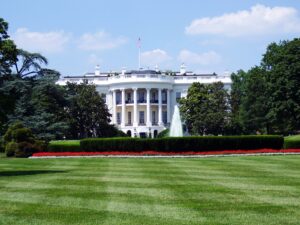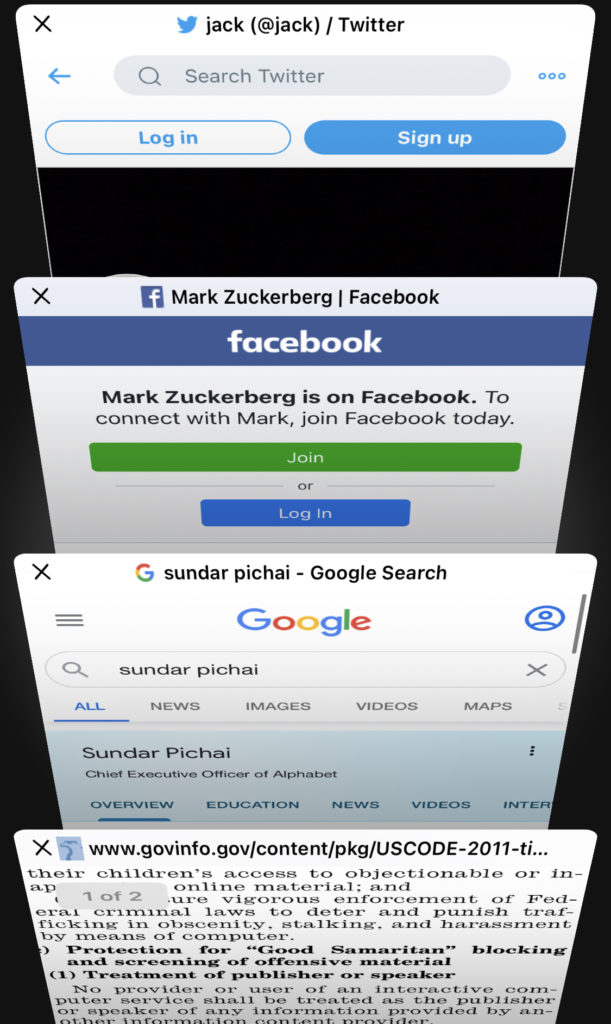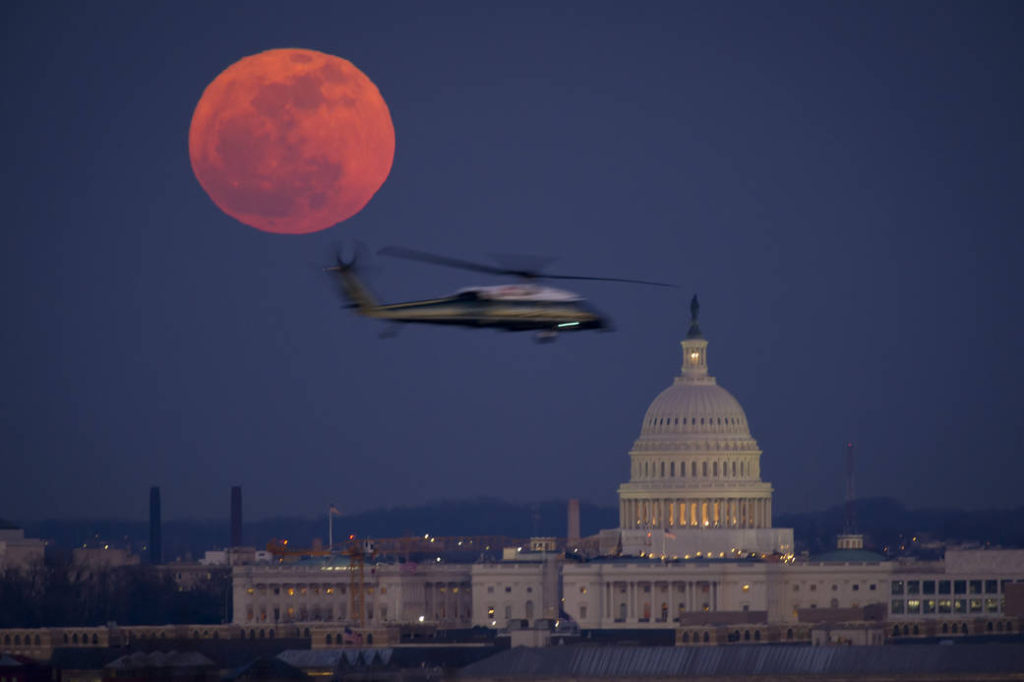By: Emily Mundt
In the wake of his scourge against diversity, equity, and inclusion (“DEI”) in federal spaces, President Trump has turned his attention to what he believes is one of the primary perpetrators of DEI in the private sector, big law. The Equal Employment Opportunity Commission (EEOC) has demanded information about employment practices from 20 of the largest–and most prestigious–law firms, including Kirkland & Ellis; Skadden, Arps, Slate, Meagher & Flom; and Latham & Watkins.[1] These firms have been targeted for their use of DEI in the hiring process, including, but not limited to, the use of diversity associate positions for law students or attendance at diverse networking events to attract higher numbers of diverse applicants.[2]
This is not the first instance in which the President has attacked the private sector and big law. In another wave of executive orders, Trump has both stripped the security clearance of “one attorney at Covington & Burling and all attorneys with clearances at Perkins Coie and Paul, Weiss”[3] and barred their attorneys’ ability to enter federal buildings, including the federal courthouses in which they litigate.[4] In a memorandum entitled, “Preventing Abuses of the Legal System and the Federal Court,” Trump urged the attorney general to “efficiently and effectively” hold accountable those “lawyers and law firms that engage in actions that violate the laws of the United States or rules governing attorney conduct.”[5] Citing Federal Rule of Civil Procedure (“FRCP”) 11, the memorandum suggested that attorneys who “harass, cause unnecessary delay, or needlessly increase the cost of litigation”[6] should be sanctioned to the fullest extent of the law. The memorandum claimed that “too many attorneys and law firms have long ignored these requirements when litigating against the Federal Government or in pursuing baseless partisan attacks.”[7]
Notably, those firms attacked in the security clearance stripping have reputations–and careers–built on federal litigation. According to a March 6 Executive Order “addressing risks from Perkins Coie,” the firm’s loss of clearance stems from its 2016 representation of Hillary Clinton, during which, according to the Order, “Perkins Coie hired Fusion GPS, which then manufactured a false ‘dossier’ designed to steal an election.”[8] “This egregious activity is part of a pattern. Perkins Coie has worked with activist donors including George Soros to judicially overturn popular, necessary, and democratically enacted election laws, including those requiring voter identification.”[9] Additionally, Perkins Coie allegedly “racially discriminates against its own attorneys and staff, and against applicants . . . It proudly excluded applicants on the basis of race for its fellowships, and it maintained these discriminatory practices until applicants harmed by them finally sued to enforce change.”[10]
As for Paul, Weiss, a March 14 Executive Order cited the firm’s history in litigating the January 6 Insurrection, stating “[i]n 2021, a Paul Weiss partner and former leading prosecutor in the office of Special Counsel Robert Mueller brought a pro bono suit against individuals alleged to have participated in the events that occurred at or near the United States Capitol on January 6, 2021 . . .”[11] The March 14 Order specifically targets pro bono work, claiming:
Global law firms have for years played an outsized role in undermining the judicial process and in the destruction of bedrock American principles. Many have engaged in activities that make our communities less safe, increase burdens on local businesses, limit constitutional freedoms, and degrade the quality of American elections. Additionally, they have sometimes done so on behalf of clients, pro bono, or ostensibly “for the public good” — potentially depriving those who cannot otherwise afford the benefit of top legal talent the access to justice deserved by all. My Administration will no longer support taxpayer funds sponsoring such harm.[12]
Firms personal ties to the President seem to have been spared the “chilling” of the executive orders. Jones Day and other “elite Trump-friendly firms,” such as “Sullivan & Cromwell, which agreed to appeal his Manhattan criminal conviction, and Troutman Pepper Locke, which represented Trump family members in the New York Attorney General’s civil fraud trial against the Trump Organization, are also missing from the EEOC list.”[13]
What these orders mean for the future of big law in North Carolina is uncertain. North Carolina has long been a key battleground state for the presidential election, with 16 electoral college votes that swing between Democrat and Republican. In 2024, the President narrowly defeated Democratic candidate Kamala Harris by 3.3 percentage points, or 183,048 votes.[14] With North Carolina, specifically Charlotte, becoming a “magnet” for big law expansion, whether the President will continue his policies of targeting DEI or not may depend entirely on whether such actions would further alienate potential Republican voters, especially since North Carolina is trending to be a key battleground state in the 2026 Senate elections. Furthermore, according to 2023 Census Bureau statistics, only 60.6 of North Carolina residents are White (Non-Hispanic), meaning potentially 39.4% of the state population would benefit from DEI programs.[15] These programs are essential not only to expanding the workforce, which stood 4.675,559 million strong in 2020,[16] but also for securing job placements for diverse postgraduate students in North Carolina, where White doctoral students, including law students, still outnumber diverse students 1.26 to 1.[17] What remains to be seen is whether the President will abandon his DEI policies in order to win over an increasingly diverse and politically important state.
[1] Lauren Hirsch, The Nonprofit Caught in the Fray of Trump’s Attacks on Big Law, N.Y. Times (Mar. 28, 2025), https://www.nytimes.com/2025/03/22/business/dealbook/trump-dei-seo-wall-street.html; Rebecca Beitsch, Equal Employment Opportunity Commission Targets Law Firms over DEI Practices, The Hill (Mar. 18, 2025), https://thehill.com/homenews/administration/5200887-eeoc-equal-opportunity-employment-commission-law-firms-dei-trump/.
[2] Craig Savitzky, A Look at Diversity in Big Law, Unveiling a Path Forward, Leopard Solutions (July 18, 2024), https://www.leopardsolutions.com/a-look-at-diversity-in-big-law-unveiling-a-path-forward/.
[3] Rebecca Beitsch, Law Firms Divided Over Response to Trump Orders, The Hill (Mar. 25, 2025), https://thehill.com/regulation/court-battles/5211686-trump-administration-targets-law-firms/.
[4] Id.
[5] Memorandum for the Att’y Gen., Preventing Abuses of the Legal System and the Federal Court, The White House (Mar. 22, 2025), https://www.whitehouse.gov/presidential-actions/2025/03/preventing-abuses-of-the-legal-system-and-the-federal-court/.
[6] Fed. R. Civ. P. 11(b)(1).
[7] Memorandum, supra note 5.
[8] Exec. Order No. 14230, Addressing Risks from Perkins Coie LLP, The White House (Mar. 6, 2025), https://www.whitehouse.gov/presidential-actions/2025/03/addressing-risks-from-perkins-coie-llp/.
[9] Id.
[10] Id.
[11] Exec. Order No. 14237, Addressing Risks from Paul Weiss, The White House (Mar. 14, 2025), https://www.whitehouse.gov/presidential-actions/2025/03/addressing-risks-from-paul-weiss/.
[12] Id.
[13] Jacob Shamsian, Trump Targeted 20 of the Biggest Law Firms over Their Diversity Programs. A GOP Favorite is Missing from the List., Bus. Insider (Mar. 21, 2025), https://www.yahoo.com/news/trump-targeted-20-biggest-law-092501746.html.
[14] North Carolina President Results: Trump Wins, NBC News (Nov. 5, 2024), https://www.nbcnews.com/politics/2024-elections/north-carolina-president-results.
[15] North Carolina, DATA USA, https://datausa.io/profile/geo/north-carolina?completionsUniversities=carnegie_DOC&genderRaceOptions=raceOption&pums5WorkforcePyramid=pums5Race1 (last accessed Apr. 1, 2025).
[16] Id.
[17] Id.






